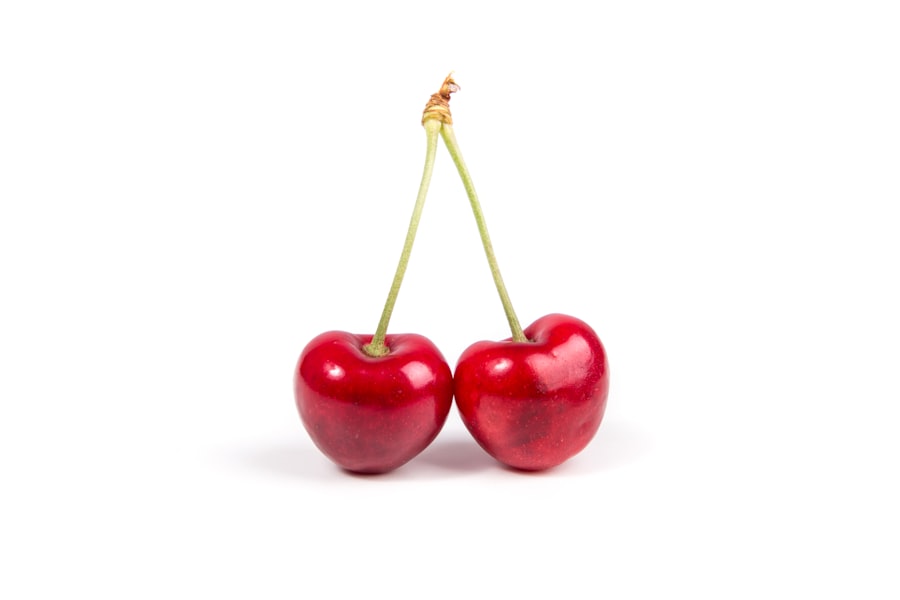Growing Cherry Tomatoes in Containers: Tips for Success

Growing cherry tomatoes in containers is a popular choice for many gardeners, and for good reason. There are several benefits to growing cherry tomatoes in containers, including the ability to have fresh, homegrown tomatoes even if you have limited space. Containers also allow for better control over soil quality and moisture levels, resulting in healthier plants and higher yields.
When it comes to growing cherry tomatoes in containers, there are a few key factors to consider. First and foremost, you’ll need to provide the ideal growing conditions for your plants. This includes choosing the right container, selecting the best soil, providing adequate sunlight, and properly watering and fertilizing your plants.
Key Takeaways
- Growing cherry tomatoes in containers is a great option for those with limited space or poor soil conditions.
- Choosing the right container is important for the health and growth of cherry tomatoes.
- Selecting the best soil for cherry tomatoes in containers involves finding a well-draining mix with added nutrients.
- Watering and fertilizing cherry tomatoes in containers requires regular attention to prevent over or under watering.
- Providing adequate sunlight is crucial for the growth and production of cherry tomatoes in containers.
Choosing the Right Container for Cherry Tomatoes
When choosing a container for your cherry tomatoes, there are a few options to consider. One popular choice is a traditional clay or terracotta pot, which provides good drainage and allows for air circulation around the roots. Another option is a plastic or resin container, which is lightweight and less prone to cracking or breaking.
In terms of size and depth requirements, cherry tomatoes generally require a container that is at least 12 inches deep and 18 inches wide. This allows for proper root development and gives the plants enough space to grow and produce fruit. It’s important to choose a container that is large enough to accommodate the mature size of your cherry tomato plants.
When it comes to materials to avoid, it’s best to steer clear of metal containers, as they can heat up quickly in the sun and potentially damage the roots of your plants. Additionally, containers made from materials such as concrete or stone can be too heavy and difficult to move if needed.
Selecting the Best Soil for Cherry Tomatoes in Containers
Soil quality is crucial when growing cherry tomatoes in containers. It’s important to choose a soil mixture that is well-draining yet retains enough moisture for the plants. A good soil mixture for cherry tomatoes in containers consists of equal parts of potting soil, compost, and perlite or vermiculite.
Adding amendments to your soil can also help promote optimal growth and fruit production. One popular amendment is organic matter, such as compost or well-rotted manure, which adds nutrients and improves soil structure. Another option is to add a slow-release fertilizer to provide a steady supply of nutrients throughout the growing season.
Watering and Fertilizing Cherry Tomatoes in Containers
| Watering and Fertilizing Cherry Tomatoes in Containers | |
|---|---|
| Watering frequency | Once a day, or when the top inch of soil feels dry |
| Amount of water | Enough to moisten the soil, but not to the point of waterlogging |
| Fertilizer type | Tomato-specific fertilizer or balanced fertilizer with equal amounts of nitrogen, phosphorus, and potassium |
| Fertilizing frequency | Every two weeks |
| Fertilizer amount | Follow package instructions, but generally 1-2 tablespoons per gallon of water |
Proper watering techniques are essential for the success of your cherry tomato plants. It’s important to keep the soil consistently moist, but not waterlogged. Overwatering can lead to root rot and other issues, while underwatering can cause the plants to wilt and produce less fruit.
To determine when to water your cherry tomato plants, simply stick your finger about an inch into the soil. If it feels dry at that depth, it’s time to water. When watering, be sure to thoroughly saturate the soil until water drains out of the bottom of the container.
In terms of fertilization, cherry tomatoes benefit from regular feeding throughout the growing season. A balanced fertilizer with equal amounts of nitrogen, phosphorus, and potassium is ideal for promoting healthy growth and fruit production. It’s best to follow the instructions on the fertilizer packaging for proper application rates and frequency.
Providing Adequate Sunlight for Cherry Tomatoes in Containers
Cherry tomatoes thrive in full sun, so it’s important to provide them with adequate sunlight for optimal growth and fruit production. Ideally, cherry tomatoes should receive at least six to eight hours of direct sunlight each day.
When positioning your containers, choose a location that receives the most sunlight throughout the day. This may require moving your containers as the sun moves across the sky. If you have limited sunlight in your garden or live in an area with a short growing season, you may need to supplement with grow lights to ensure your cherry tomatoes receive enough light.
Pruning and Trellising Cherry Tomatoes in Containers

Pruning and trellising your cherry tomato plants can help promote better air circulation, reduce the risk of disease, and increase fruit production. Pruning involves removing suckers, which are the small shoots that grow in the leaf axils of the plant. By removing these suckers, you allow the plant to focus its energy on producing fruit instead of foliage.
Trellising your cherry tomato plants provides support for the vines and helps keep them off the ground. This can prevent diseases and pests from affecting the plants and makes it easier to harvest the fruit. There are several types of trellises to consider, including stakes, cages, and trellis netting. Choose a trellis that is sturdy enough to support the weight of your plants and fruit.
Preventing Pests and Diseases in Cherry Tomatoes in Containers
Like any plant, cherry tomatoes are susceptible to pests and diseases. Common pests that can affect cherry tomatoes include aphids, whiteflies, and tomato hornworms. Diseases such as blight, powdery mildew, and blossom end rot can also be problematic.
To control pests naturally, you can try using insecticidal soaps or neem oil. These products are safe for use on edible plants and can help eliminate pests without harming beneficial insects. For diseases, it’s important to practice good sanitation by removing any infected leaves or fruit and avoiding overhead watering.
Taking preventative measures can also help reduce the risk of pests and diseases. This includes regularly inspecting your plants for signs of trouble, providing adequate air circulation around the plants, and avoiding overcrowding.
Harvesting and Storing Cherry Tomatoes from Containers
Knowing when to harvest your cherry tomatoes is key to enjoying them at their peak flavor. Cherry tomatoes are typically ready to harvest when they are fully colored and slightly soft to the touch. They should easily detach from the vine with a gentle twist.
To store cherry tomatoes for optimal freshness, it’s best to keep them at room temperature and out of direct sunlight. Avoid refrigerating them, as this can affect their flavor and texture. If you have an abundance of cherry tomatoes, you can also freeze them for later use by blanching them briefly in boiling water, then transferring them to airtight containers or freezer bags.
Troubleshooting Common Problems with Cherry Tomatoes in Containers
While growing cherry tomatoes in containers can be rewarding, it’s not without its challenges. Some common problems you may encounter include yellowing leaves, blossom end rot, and cracking fruit.
Yellowing leaves can be a sign of nutrient deficiencies or overwatering. To address this issue, make sure your plants are receiving adequate nutrients and adjust your watering schedule if necessary.
Blossom end rot is a condition where the bottom of the tomato fruit turns black and leathery. This is often caused by a calcium deficiency or inconsistent watering. To prevent blossom end rot, make sure your plants are receiving enough calcium and maintain consistent moisture levels.
Cracking fruit can occur when there is rapid growth followed by heavy rainfall or overwatering. To prevent this issue, try to maintain consistent moisture levels and provide adequate drainage for your plants.
Conclusion and Final Tips for Success with Cherry Tomatoes in Containers
Growing cherry tomatoes in containers is a great way to enjoy fresh, homegrown tomatoes even if you have limited space. By choosing the right container, providing the best soil, ensuring adequate sunlight, properly watering and fertilizing, pruning and trellising, preventing pests and diseases, harvesting and storing properly, and troubleshooting common problems, you can have a successful harvest of delicious cherry tomatoes.
In conclusion, growing cherry tomatoes in containers is a rewarding and enjoyable gardening experience. With the right techniques and care, you can enjoy a bountiful harvest of sweet and juicy cherry tomatoes throughout the growing season. So why not give it a try and start growing your own cherry tomatoes in containers? You’ll be amazed at the taste and satisfaction of eating tomatoes that you’ve grown yourself. Happy gardening!
If you’re interested in planting cherry tomatoes in containers, you might find this article from Lawn World helpful. They provide a comprehensive guide on how to successfully grow cherry tomatoes in containers, offering tips on selecting the right container, choosing the appropriate soil mix, and providing proper care and maintenance. Check out their article here for expert advice on container gardening and enjoy a bountiful harvest of delicious cherry tomatoes!
FAQs
What are cherry tomatoes?
Cherry tomatoes are small, bite-sized tomatoes that are typically round or oblong in shape. They are known for their sweet flavor and are often used in salads, sauces, and as a snack.
Can cherry tomatoes be grown in containers?
Yes, cherry tomatoes can be grown in containers. In fact, they are one of the best types of tomatoes to grow in containers because they have a compact growth habit and don’t require as much space as other tomato varieties.
What type of container is best for growing cherry tomatoes?
The best type of container for growing cherry tomatoes is a large pot or container that is at least 12 inches deep and 12 inches wide. It should also have drainage holes to prevent water from accumulating in the bottom of the container.
What type of soil should be used for planting cherry tomatoes in containers?
A high-quality potting mix that is rich in organic matter and has good drainage is best for planting cherry tomatoes in containers. Avoid using garden soil, as it can be too heavy and may not drain well in a container.
How often should cherry tomatoes be watered when grown in containers?
Cherry tomatoes grown in containers should be watered regularly, typically once a day or every other day depending on the weather and the size of the container. It’s important to keep the soil evenly moist but not waterlogged.
Do cherry tomatoes need fertilizer when grown in containers?
Yes, cherry tomatoes grown in containers will benefit from regular fertilization. Use a balanced fertilizer that is high in nitrogen, phosphorus, and potassium, and follow the manufacturer’s instructions for application rates and frequency.
How long does it take for cherry tomatoes to mature when grown in containers?
Cherry tomatoes typically take 60-80 days to mature when grown in containers, depending on the variety and growing conditions. It’s important to provide adequate sunlight, water, and nutrients to ensure healthy growth and fruit production.



